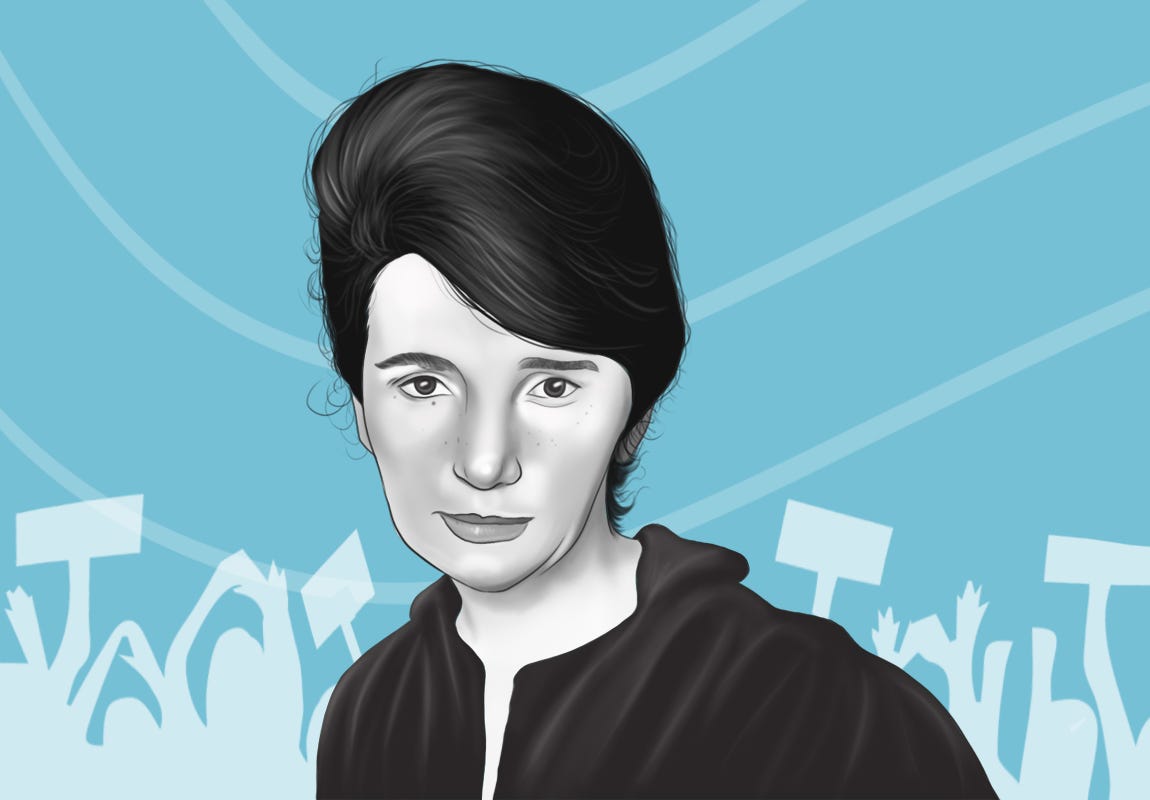Margaret Sanger was the founder of the birth control movement in the United States and a lifelong advocate for women’s reproductive rights.
Margaret Sanger was born on September 14, 1879, in Corning, New York. She was the sixth of eleven children born to Michael Hennessey Higgins and Anna Purcell Higgins. Her father was a stone mason, and her mother was a devout Roman Catholic Irishwoman. Sanger grew up in poverty. Her mother died at the age of 50, and Sanger understood that her mother’s death was a result of the physical toll she endured during eleven pregnancies. This shaped Sanger’s life path.
Margaret Sanger attended Claverack College, also known as Hudson River Institute, in Claverack, New York. She completed nursing training at White Plains Hospital, New York, in 1902. She married William Sanger, an architect, in 1900, and moved to Hastings, New York, where they had three children.
In 1912, Sanger gave up nursing to commit fully to the cause of birth control and sex education.
The Sangers relocated to New York City in 1910, where they connected with several intellectuals and activists associated with the Progressive Era, such as Max Eastman, Upton Sinclair, and Emma Goldman. When Sanger practised obstetrical nursing on the Lower East Side of New York City, she frequently visited the homes of poor immigrants, often with large families, where she saw the relationships between poverty, uncontrolled fertility, high infant and maternal mortality rates, and deaths from botched illegal abortions. This influenced Sanger to become a feminist. She believed that every woman had the right to avoid unwanted pregnancies and that the ability to control family size was crucial to ending the cycle of women’s poverty. At that time, it was illegal to distribute birth control information. Sanger devoted her life to eradicating the legal barriers to spreading information on contraception.
In 1912, Sanger gave up nursing to commit fully to the cause of birth control and sex education. She became a member of the Women’s Committee of the New York chapter of the Socialist Party. She also participated in women’s labour protests, including the strikes in Lawrence, Massachusetts, in 1912, and Paterson, New Jersey, in 1913. During this time, she also focussed on writing and publishing a series of articles, including ‘What Every Girl Should Know’ for the New York Call.
In 1916, Margaret Sanger opened the first birth control clinic in Brownsville, Brooklyn.
During that period, the Comstock Act of 1873 prohibited the distribution of ‘obscene’ materials through the mail and regarded birth-control information as ‘obscene’. In 1914, Margaret Sanger launched her feminist publication, The Woman Rebel, advocating for birth control. She was charged with the violation of Comstock laws, and she fled to England. In her absence, her friends shared pamphlets on contraceptive techniques written by Sanger. She returned to the United States after a year to stand trial. At that time, her five-year-old daughter died unexpectedly. The charges against her were dropped after continuous public pressure.
In 1916, Margaret Sanger opened the first birth control clinic in Brownsville, Brooklyn. She was arrested a week later and charged with maintaining a “public nuisance”. She had to spend 30 days in jail. Her arrest caught media attention and earned her several supporters. She appealed the decision. Even though she lost the appeal, the courts ruled that physicians could prescribe contraceptives to women for medical reasons. Margaret identified a loophole in this decision and opened a clinic in 1923 staffed by female doctors and social workers. This clinic later became the Planned Parenthood Association of America.
Margaret Sanger got divorced in 1914, and she remarried oil tycoon James Noah Slow in 1922.
In 1917, Sanger launched the Birth Control Review, and in 1921, she founded the American Birth Control League to gain support from social workers, medical professionals and the public for birth control. In 1929, she formed the National Committee on Federal Legislation for Birth Control to lobby Congress for legislation permitting doctors to prescribe birth control.
Throughout her activist career, Sanger faced resistance from various parts. However, over time, her efforts had the desired effect as they led to the legalisation and widespread usage of contraceptives in the United States. In 1936, the court declared that doctors could prescribe birth control. In 1971, the Comstock Act was revoked nearly a century after its introduction.
During her lifetime, Margaret also faced criticism for her association with the Eugenics movement, which sought to breed out the undesirable population by limiting the ability to procreate through birth control and sterilisation. Sanger saw the value of birth control science in preventing birth defects. Even though she opposed the racial and class focus of the movement, her association with it dented her reputation.
During the 1930s, Sanger expanded her activities internationally. Though she retired in 1942, Sanger remained a strong advocate for birth control. In 1950, with the financial aid of Katharine McCormick, heiress to International Harvester Company, Sanger recruited researcher Gregory Pincus to develop an oral contraceptive. Pincus developed the pill, and it was approved by the United States Food and Drug Administration in 1960.
Margaret Sanger died on September 6, 1966, at the age of 86.
Thank you for listening. Subscribe to The Scando Review on thescandoreview.com.
Happy Teaching!














Margaret Sanger: Founder of the birth control movement in the US